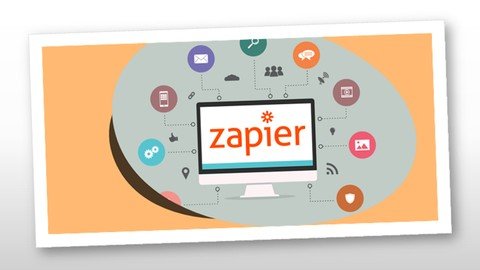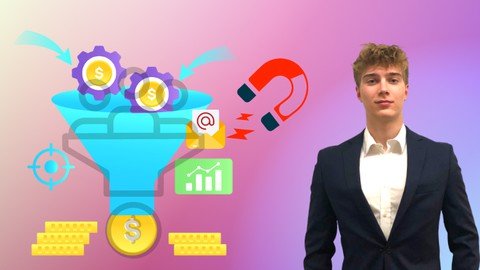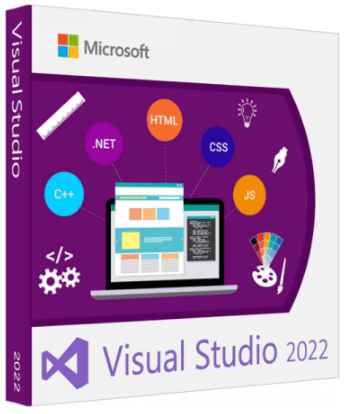Diploma Course In Retail Management
5-12-2022, 20:26 | 0nelove | Tutorials | 103 | 0
Last updated 4/2022
MP4 | Video: h264, 1280x720 | Audio: AAC, 44.1 KHz
Language: English | Size: 5.08 GB | Duration: 9h 3m
Enhance your skills (Operations/Sales/VM/HR/SCM) in the ever growing Retail industry - Cover latest trends, casestudies
What you'll learn
Get Diploma in Retail Management
Explain different retail formats
Know about key players
Different factors affecting Pricing
Principles of Merchandising
Improve Sales and Service of your business
Improve by Digital Marketing
Know popular tips and tricks in Visual Merchandising
Improve your understanding of Retail KPIs
People management
Understand analytics
Design thinking and creativity for Innovations
Performance Management
Process improvement
Common trends in technology
Improving Leadership skills
Business Analysis
Common Legal terminologies
Requirements
Understanding of the English language.
Interest in retail
Interest in Business, Leadership and Management
Description
Are you someone who wants to join the retail industry?Are you someone who wants to be a retail entrepreneur?Or anyone who wants to know more about this interesting industry?If the answer to all these questions is a yes, then you've landed on the right placeRetail is an ever-growing industry. Retail management saves time and ensures the customers easily locate their desired merchandise and return home satisfied. An effective management avoids unnecessary chaos at the store and rather increase the sales of the store. This course is suitable for all - Operation, Sales, VM, HR, Logistics if you want to enter in Retail domain.Section 1: Retail Industry Overview1. MeaningExplain the meaning and importance of Retail Differentiate between Customer and Consumer2. Story of RetailDescribe the evolution of Retail Differentiate between Organised and Unorganised Retail Explain the key characteristics of Organised Retail Explain the key characteristics of Unorganised Retail3. Common FormatsDescribe the common formats in Retail industry4. Key PlayersList the key players5. 6 Ps of RetailExplain the meaning and importance of 6Ps of Retail6. Functions/Departments in RetailExplain the key functions/departments in retail.7. Career opportunities in Retail industryList the key profiles in the retail industry Explain the key skills required to perform these rolesSection 2: Pricing1. Pricing MethodsExplain the meaning and importance of various pricing methods2. Price elasticityDescribe the meaning of price elasticity of demandExplain the significance of Price elasticityCalculate the price elasticity3. Survey - Willingness to payTake feedback on price worthExplain the preferred Price pointsSection 3: Supply Chain Management1. Is Supply Chain that simple?Explain that supply chain in the practical situation can be complicatedUnderstand the practical scenario of a complicated supply chainSection 4: Buying and Merchandising1. Principles of MerchandisingExplain the various principles to consider in merchandisingSection 5: Barcodes1. MeaningExplain the meaning and importance of Barcodes2. Common typesExplain the common types of Barcodes3. What is GTINIllustrate the reason behind forming GTINExplain the meaning and importance of GTINExplain common standards in GTIN4. How to generate BarcodesGenerate barcodes for the productsSection 6: Sales and Service Excellence1. TouchpointsExplain the meaning of touchpointsDescribe the key categories of TouchpointsList the various touchpoints2. Moment of TruthDescribe the meaning of Moment of TruthExplain the importance of knowing the Moment of TruthDescribe the key categories of Moment of Truths3. GUEST ModelExplain the GUEST model of Sales and Service ExcellenceDescribe the stages in the GUEST model4. Gain AttentionPrepare to gain the attention of the customersDescribe the types of greeting approachesApply the appropriate greeting approach to gain attentionApply tactics to gain the attention of the customers5. Understand NeedsInculcate the importance of understanding the correct customer needsAvoid biases in understanding needsExplain the techniques of getting the maximum information from the customersDifferentiate between open-ended and closed-ended questionsAsk appropriate questions6. Explain about the Product/ServiceExplain the FABing technique to get the maximum salesApply the FABing techniqueExplain the Do's and Don'ts in product/service presentation7. Suggest and Objection HandlingSuggest other products/servicesExplain the meaning and importance of cross-selling and up-sellingApply cross-selling and up-selling to boost salesExplain key rules of upsellingExplain feel-felt-found strategy in objection handlingDescribe do's and don't of objection handlingHandle the objections of the customers8. Thank youLeave a good impression on the customersDifferentiate between Customer Service and Customer ExperienceExplain the preferred style between Customer Service and Customer ExperienceSection 7: Digital Marketing1. IntroductionExplain the meaning of Digital MarketingDifferentiate between Digital marketing and Traditional marketingExplain why Digital marketing is better than Traditional marketingList the key modules2. Search Engine Optimisation (SEO) - IntroductionExplain the meaning of Search EngineList various Search EnginesExplain the meaning and importance of Search Engine Optimization (SEO)List the pros and cons of SEOExplain the requirements for WebsiteDescribe web hosting, domain name and website builder3. How Search Engine worksExplain how Search Engine works4. What a website is made of!Describe the technical aspects of a website - HTML, CSS, JS5. Keyword researchDescribe the SEO processExplain keyword researchExplain the importance of finding right keywordsDescribe various types of keywordsFind right keywords6. On-page and Off-page OptimizationExplain on-page and off-page optimizationDescribe various strategies for on-page and off-page optimizationDo on-page and off-page optimzationsDifferentiate between black hat SEO and ethical SEO7. Email marketingExplain the meaning and importance of email marketingDescribe the history of emails and email marketingExplain the advantages of email marketing8. Email marketing systemExplain the marketing funnelExplain the need of using email marketing systemList key Email marketing systemsDescribe the key steps in email marketingImprove email contentList the key tips for building email listDescribe key KPIs9. LinkedIn Profile OptimixationExplain the importance of LinkedIn Profile OptmizationDo optimzation on LinkedIn10. Increase your Reach on LinkedInApply various tactics to increase the reach on LinkedIn11. Online AdvertisementsExplain the advantages and disadvantages of online advertisementsDescribe PPC and SEMDifferentiate among SEO, PPC and SEM12. Google Ads - Search EnginesExplain the key steps Do SEM through Google AdsDescribe the common terminologies13. Web AnalyticsExplain the meaning and importance of Web AnalyticsDescribe who web analytics workDescribe the common reportsUnderstand the common KPIs of Digital Marketing14. Google AnalyticsDescribe the advantages of Google AnalyticsAnalyse the performance on Google AnalyticsSection 8: Visual Merchandising1. Meaning and ImportanceExplain the meaning of Visual MerchandisingDescribe the importance and some fun facts in Visual MerchandisingExplain the importance of 5 senses in Visual merchandising2. Key elementsExplain the key elements3. Store Exteriors and Store InteriorsDescribe the meaning of Store Exteriors and Store InteriorsExplain the meaning and importance of store facade and window displayApply tactics to improve the sales4. Store LayoutsDescribe the meaning of Store LayoutsExplain various types of Store Layouts5. FixturesDescribe the meaning of FixturesExplain various types of Fixtures and their usage6. Product Presentation/Merchandise ArrangementDescribe the meaning of Product presentation/merchandise arrangementsApply the tips to improve the presentationApply the tips to reduce the wastage7. SignagesDescribe the meaning of SignagesExplain the types of signagesApply the tactics to improve the sales8. PlanogramDescribe the meaning of PlanogramExplain the importance of Planogram9. Popular Tips and TricksExplain the colour wheel and impact of coloursDescribe various colour schemesExplain the meaning and importance of color blockingExplain the meaning and importance of endcapsExplain the meaning and importance of Pyramid principleApply the popular tips and tricks in Visual merchandising10. CasestudyCasestudySection 9: Point of Sale (POS)1. MeaningDescribe the meaning of Point of Sale (POS)Explain the importance of Point of Sale (POS)2. CasestudyCasestudySection 10: Business Acumen1. Meaning and ImportanceExplain the meaning of Business AcumenDescribe the imporance of Business Acumen2. Common TerminologiesExplain the common terminologies such as Revenue, COGS, Gross Sale, Net Sale, EDITDA, Margin, Markup etc3. Common KPIsCalculate walkin, conversion, ATV, ABS, ASP, Like-to-Like, Sell through, Inventory Turn over ratioExplain impact of cross-selling and up-selling on Sales KPIs4. Business Model CanvasExplain the meaning and importance of Business Model CanvasDescribe the key elements of Business Model Canvas5. CasestudyCasestudySection 11: Business Analysis Techniques1. SWOT AnalysisExplain the meaning and importance of SWOT AnalysisDo SWOT Analysis2. Pestle AnalysisExplain the meaning and importance of PESTLE AnalysisDo PESTLE AnalysisSection 12: Design Thinking and Creativity for Innovations1. Meaning and ImportanceExplain the meaning and importance of Design ThinkingList of some companies which are known for Design ThinkingExplain the difference in creativity, invention and innovationDescribe the importance of Design thinking for the companies and individualsExplain the steps in Design Thinking2. EmpathiseDescribe the importance of Empathy in problem solvingDraw the empathy mapEmpathise with the audience3. Define the problem statementDescribe the importance of writing a formal Problem statementExplain 5Ws and 2Hs, 5 Whys, Fish bone diagramWrite "How might we" questionsApply the tips to write Problem statement4. Idea generation and brainstormingExplain the meaning of BrainstormingDescribe the key principles of BrainstormingApply SCAMPER technique for generating more ideas5. Prototype and testExplain the meaning and importance of Prototype and TestingDifferentiate between Prototype and Test stageExplain the key principlesGenerate prototype and test the products6. Case studyCasestudySection 13: People Management1. What is Human Resource ManagementDescribe the meaning of Human Resource ManagementExplain the importance of People elementExplain whether it is an art or a science2. EvolutionDescribe the evolutioon of Human resource managementExplain the key characteristics of each eraDifferentiate between Personnel management and Human resource management3. Functions of HRMList the various functions in People managementExplain the meaning and importance of these functions4. Competency based Job analysisDescribe competencyExplain the key elements of competencyDescribe competency based job analysis5. Assessment TestsExplain different types of assessment tests.Describe different methods that are used for assessment to assess psychological attributes.6. In-person InterviewDifferentiate between structured and unstructured interviewsApply STAR technique in in-person interviews7. Common hiring biasesExplain common hiring biasesAnalyse the mistakesLearn ways to minimize hiring biasness8. ADDIE Model in TrainingExplain the meaning and importance of Instructional Systems DesignExplain the ADDIE model of TrainingDescribe the various stages in ADDIE Model9. Performance Management MeaningExplain the meaning of Performance management systemDecribe the key stages in Performance management10. What should we assess?Explain what should be assessed in the employees - Traits/ Competencies/Results11. Key characteristicsExplain the key characteristices of an effective Performance Management SystemDescribe the difference between Traditional performance management and Everyday performance management12. SMART goal settingExplain the meaning of SMART goal settingDesign SMART goal setting13. KRAs and KPIsExplain the meaning of KRAs and KPIsDesign KRAs and KPIs14. Multi-Source AppraisalExplain the meaning of Multi-Source appriasalDescribe the advantages and disadvantagesDesign multi-source appraisal15. Psychological and Psychometric testsExplain the meaning of Pschological and Psychometric testsDescribe the advantages and disadvantages16. Giving constructive feedbacksExplain the importance of giving effective feedbacksApply the STAR Technique for sharing feedback14. Maslow's hierarchy of needsDescribe Maslow's hierarchy of needsApply tips for employee engagement15. Personality types - DISC modelDescribe DISC modelMold style as per the audience16. Managing Team - Belbin Team rolesExplain the Belbin team rolesIdentify the personality typeMold the style as per audienceSection 14: Process Improvement1. Lean vs. Six-Sigma vs. Lean Six SigmaExplain Lean, Six-Sigma, Lean Six-Sigma quality control methodsDescribe the key principles of LeanExplain different types of wastesDescribe the steps in Six-Sigma2. 5S methodologyDescribe 5S methodology3. Case-studyCasestudy4. Unmanaged InventoryCasestudySection 15: Communication and Communication skills1. ElementsExplain the meaning of Communication and Communication skillsDifferentiate between Communication and Communication skillsList common barriersExplain the elements of communicationExplain the contribution of different elements in communication2. 7 Cs of CommunicationExplain the 7 Cs of communicationAnalyse the common mistakes in communicationSection 16: Email etiquettes1. Email etiquettesApply the do's and don'ts of writing proper emails.Apply 7 Cs of communication in emailsSection 17: Technology1. MS ExcelUse the common features of MS Excel.2. Overview PowerBIGet an overview of PowerBI3. Google DriveUse Google drive for managing files4. Google FormUse Google forms for surveys, quizzes etc5. Data ScienceExplain the meaning and importance of Data ScienceDescribe the applications6. Latest technologiesExplain the common trends of technology in RetailSection 18: Luxury Brand Management1. Tips applied by Luxury BrandsAnalyse the tips applied by Luxury BrandsApply the tips in your brandSection 19: Legal1. Common Legal TerminologiesExplain the commonly used legal terminologiesSection 20: Leadership Quotient (LQ)1. Self-Assessment and common mythsSelf-assessment on Leadership Quotient (LQ)Burst common myths on LeadershipExplain the meaning of Leaders and Leadership skills2. Conflict ManagementExplain the meaning and importance of Conflict managementDescribe common styles in conflict managementAnalyse the importance of the preferred style3. Self-Assessment - AssertiveSelf-assessment on Assertive style of communication4. Assertive Communication techniquesExplain the common assertive communication techniquesApply Assertive communication techniques5. Change ManagementExplain the ADKAR model of changeDescribe the stages and importance of the stagesApply ADKAR modelSection 21: Interesting factsInteresting factsSection 22: ProjectDetailed Project
Overview
Section 1: Retail Industry Overview
Lecture 1 Meaning
Lecture 2 Story of Retail
Lecture 3 Common formats
Lecture 4 Key Players
Lecture 5 6 Ps of Retail
Lecture 6 Functions/Departments in Retail
Lecture 7 Career opportunities in Retail industry
Section 2: Pricing
Lecture 8 Pricing Methods
Lecture 9 Price elasticity
Lecture 10 Survey - Willingness to pay
Section 3: Supply Chain Management
Lecture 11 Is Supply Chain that simple?
Section 4: Buying and Merchandising
Lecture 12 Principles of Merchandising
Section 5: Barcodes
Lecture 13 Meaning
Lecture 14 Common types
Lecture 15 What is GTIN
Lecture 16 How to generate Bar Codes
Section 6: Sales and Service Excellence
Lecture 17 Touchpoints
Lecture 18 GUEST Model
Lecture 19 Gain attention
Lecture 20 Understand Needs
Lecture 21 Explain about the Product/Service
Lecture 22 Suggest and Objection Handling
Lecture 23 Thank you
Section 7: Digital Marketing
Lecture 24 Introduction
Lecture 25 Search Engine Optimisation (SEO) - Introduction
Lecture 26 How Search Engine works
Lecture 27 What a website is made of!
Lecture 28 Keyword research
Lecture 29 On-page and Off-page Optimization Part 1
Lecture 30 On-page and Off-page Optimization Part 2
Lecture 31 Email Marketing
Lecture 32 Email Marketing System
Lecture 33 Email Marketing System
Lecture 34 LinkedIn Profile Optimization
Lecture 35 Increase your Reach on LinkedIn
Lecture 36 Online Advertisements
Lecture 37 Google Ads - Search Engines
Lecture 38 Web Analytics
Lecture 39 Google Analytics
Section 8: Visual Merchandising
Lecture 40 Meaning and Importance
Lecture 41 Key Elements
Lecture 42 Store Exteriors and Store Interiors
Lecture 43 Store Layouts
Lecture 44 Fixtures
Lecture 45 Product Presentation/Merchandise Arrangement
Lecture 46 Signages
Lecture 47 Planogram
Lecture 48 Popular Tips and Tricks
Lecture 49 Case study
Section 9: Guerrilla Marketing
Lecture 50 Meaning and key characteristics
Lecture 51 Examples
Section 10: Point of Sale (POS)
Lecture 52 Meaning
Lecture 53 Case study
Section 11: Business Acumen
Lecture 54 Meaning and Importance
Lecture 55 Common Terminologies
Lecture 56 Common KPIs
Lecture 57 Business Model Canvas
Lecture 58 Case-study: Business Model Canvas
Section 12: Business Analysis Techniques
Lecture 59 SWOT Analysis
Lecture 60 PESTLE Analysis
Section 13: Customer Relationship Management (CRM)
Lecture 61 Meaning and Importance
Lecture 62 Demo - 1
Lecture 63 Demo - 2
Lecture 64 Demo - 3
Section 14: Design Thinking and Creativity for Innovation
Lecture 65 Meaning and Importance
Lecture 66 Empathise
Lecture 67 Define the Problem Statement
Lecture 68 Idea generation and Brainstorming
Lecture 69 Prototype and Test
Lecture 70 Case-study
Section 15: People Management
Lecture 71 What is Human Resource Management
Lecture 72 Evolution
Lecture 73 Functions of HRM
Lecture 74 Competency based job analysis
Lecture 75 Assessment Tests
Lecture 76 In-Person Interview
Lecture 77 Common hiring biases
Lecture 78 ADDIE Model in Training
Lecture 79 Performance Management Meaning
Lecture 80 What should we assess?
Lecture 81 Key Characteristics
Lecture 82 SMART goal setting
Lecture 83 KRAs and KPIs
Lecture 84 Multi-Source Appraisal
Lecture 85 Psychological and psychometric tests
Lecture 86 Giving constructive feedbacks
Lecture 87 Maslow's hierarchy of needs
Lecture 88 Personality types - DISC Model
Lecture 89 Managing Team - Belbin Team roles
Section 16: Process Improvement
Lecture 90 Lean vs. Six-Sigma vs. Lean Six-Sigma
Lecture 91 5S methodology
Lecture 92 Case study
Lecture 93 Case study
Lecture 94 Case study
Lecture 95 Unmanaged Inventory
Section 17: Communication and Communication skills
Lecture 96 Elements
Lecture 97 7Cs of Communication
Section 18: Email Etiquettes
Lecture 98 Meaning and Importance
Lecture 99 Email structure
Lecture 100 How to write emails effectively
Lecture 101 Common phrases
Lecture 102 Common abbreviations
Section 19: Technology
Lecture 103 MS Excel
Lecture 104 Overview Power BI
Lecture 105 Google Drive
Lecture 106 Google Forms
Lecture 107 Data Science
Lecture 108 Latest trends in Retailing
Section 20: Luxury Brand Management
Lecture 109 Tips applied by Luxury Brands
Section 21: Legal
Lecture 110 Common Legal Terminologies which everyone should know
Section 22: Leadership Quotient (LQ)
Lecture 111 Self-Assessment and common myths
Lecture 112 Conflict Management
Lecture 113 Self-Assessment - Assertive
Lecture 114 Assertive Communication techniques
Lecture 115 Change Management
Section 23: Interesting facts
Lecture 116 Interesting facts
Section 24: Project
Management students - All specialisations,Entrepreneurs looking to enhance their skills in Retail Management
Screenshots
https://rapidgator.net/file/647d548323f3d47f40ee5f6329aff3f3/Diploma_Course_in_Retail_Management.part1.rar.html
https://rapidgator.net/file/02b7bfab1242a492a15ab96b4896a81e/Diploma_Course_in_Retail_Management.part2.rar.html
https://rapidgator.net/file/b20a83fd8a2a3855ca34e1a9d9be4ad4/Diploma_Course_in_Retail_Management.part3.rar.html
https://rapidgator.net/file/554fe48004f1079ae018a75291447351/Diploma_Course_in_Retail_Management.part4.rar.html
https://rapidgator.net/file/49ec96fb528f73937611b6190959f9cd/Diploma_Course_in_Retail_Management.part5.rar.html
https://rapidgator.net/file/c7af8b0b6612a1422f93ba672bac049b/Diploma_Course_in_Retail_Management.part6.rar.html
https://uploadgig.com/file/download/3c8847c800B07371/Diploma_Course_in_Retail_Management.part1.rar
https://uploadgig.com/file/download/a40428137fac6687/Diploma_Course_in_Retail_Management.part2.rar
https://uploadgig.com/file/download/9b1C9e6bA8a826B0/Diploma_Course_in_Retail_Management.part3.rar
https://uploadgig.com/file/download/625dE1d32854f381/Diploma_Course_in_Retail_Management.part4.rar
https://uploadgig.com/file/download/FE3caa3a12Ea60e7/Diploma_Course_in_Retail_Management.part5.rar
https://uploadgig.com/file/download/dc893F2f0110A87a/Diploma_Course_in_Retail_Management.part6.rar
https://rapidgator.net/file/02b7bfab1242a492a15ab96b4896a81e/Diploma_Course_in_Retail_Management.part2.rar.html
https://rapidgator.net/file/b20a83fd8a2a3855ca34e1a9d9be4ad4/Diploma_Course_in_Retail_Management.part3.rar.html
https://rapidgator.net/file/554fe48004f1079ae018a75291447351/Diploma_Course_in_Retail_Management.part4.rar.html
https://rapidgator.net/file/49ec96fb528f73937611b6190959f9cd/Diploma_Course_in_Retail_Management.part5.rar.html
https://rapidgator.net/file/c7af8b0b6612a1422f93ba672bac049b/Diploma_Course_in_Retail_Management.part6.rar.html
https://uploadgig.com/file/download/3c8847c800B07371/Diploma_Course_in_Retail_Management.part1.rar
https://uploadgig.com/file/download/a40428137fac6687/Diploma_Course_in_Retail_Management.part2.rar
https://uploadgig.com/file/download/9b1C9e6bA8a826B0/Diploma_Course_in_Retail_Management.part3.rar
https://uploadgig.com/file/download/625dE1d32854f381/Diploma_Course_in_Retail_Management.part4.rar
https://uploadgig.com/file/download/FE3caa3a12Ea60e7/Diploma_Course_in_Retail_Management.part5.rar
https://uploadgig.com/file/download/dc893F2f0110A87a/Diploma_Course_in_Retail_Management.part6.rar
The minimum comment length is 20 characters. Respect yourself and others!





